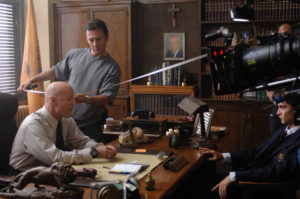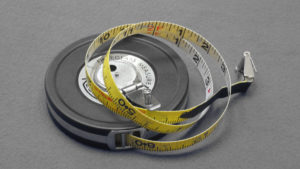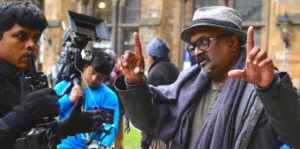
The Focus Pullers- Mahesh Muthuswami
Apr 07 2018
In a typical set of a mainstream feature there could easily be a crew strength of around 100 or more.If there could be one person , who , by his mistake, could screw up all these 100 people’s work towards a shot being taken,then that single person would be the focus puller. So much important is the focus puller’s job.

Focus pulling is the art and craft of keeping in focus the preferred subject continuously , as the camera moves or as the actor moves or as both the camera and the actor move.

If we look at any of the recent digital still cameras, AutoFocus( AF ) is one major feature which is being positioned asthe USP of that camera. The more AF points or the more AF modes or the faster AF response it has, better that camera. These Cameras excel in getting a super sharp focus.
A line producer friend of mine , who tries to keep himself updated about filmmaking technology ,was very curious and was asking ,can’t we have auto focus in cameras used for cinematography.In effect , his question was :is there a need for a focus puller ?
In principle, yeah definitely its possible to some extent?
But is focus pulling just a mechanical craft alone ? Or is there something more to it.

I started my career as a focus puller in commercials, for six months , in Mumbai, before moving to Chennai. So,I can vouch that a good focus puller participates in the shot completely , with the knowledge of that shot’s context ,that sequence’s context and the Cinematographer’s intent. The years of experience on the set, gives him a skill of prejudging certain unexpected changes while the shot is on.Continuously thinking in terms of feet and inches.
In a Chennai crew , the first camera attendant doubles up as the focus puller too. He would have easily put up atleast a decade of experience on sets. Starting off as the last camera attendant lifting and moving lens boxes and camera tripods and then slowly moving his way up the hierarchy.
I have listened to stories in awe ,about our focus pullers from Chennai when they go to work in a Mumbai film. Friends from institute , would talk in awe of their skills. How, absolutely without any tape marks or preparation , they are able to deliver sharply focussed shots. Shot after shot.The trained eye and the years of experience in the sets were at work.
There is also the human element of understanding the shot’s context and meaning. He is the man physically next to the Cinematographer always , in a set. And hence in a good position to comprehend a shot , while it is being setup by the Cinematographer. And the Cinematographer’s intent for every shot.
The advent of follow-focus made his setup more professional.
The wireless remote focus, enabled the focus pullers to be physically away from the moving camera systems like Steadicam or Jimmy Jib or Akela or Gimbal.
The laser-distance measuring devices , sometimes reduces the cumbersomeness of the tape mark procedure.

And , there have been attempts of systems like Andra , where a tiny motion capture sensor is used on the actor’s body to continuously track his movement and communicate it back to the receiver on the camera which , pulls the focus.
But the human element , I think , could not be completely done away with. The speed or rhythm in a rack-focus needs definitely a focus puller. In a long take, when the camera pores over different actors over the time, the focus puller’s competence definitely comes into play.
In this age of invention of driver-less cars, driven with the help of AI systems , software & sensors, one never knows.
There might be a day when a human focus puller might not be necessary. Or for that matter , AI systems might take over the human camera operator too….?

Time and again i would say cinema is an art wedded to science…! Auto systems will be an add on accessory…! Focus pullers should exist as they add human touch and understand communications given by the DOPs.
Mahesh Muthuswami
Cinematographer/Faculty
